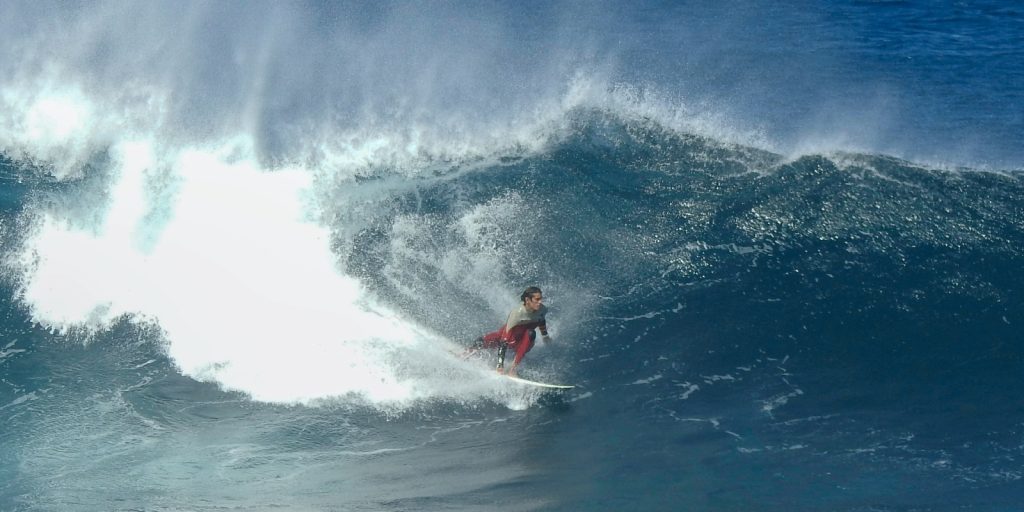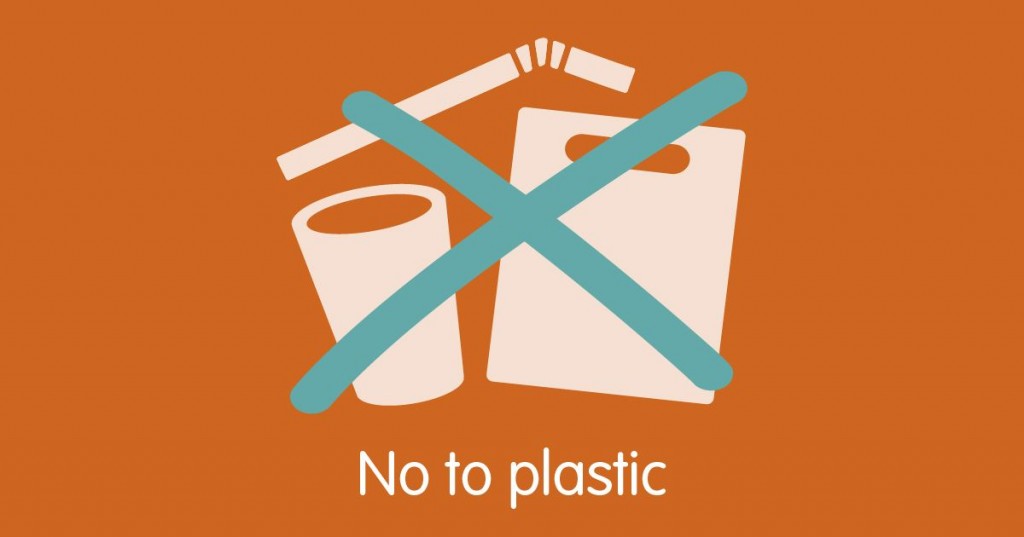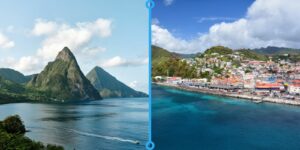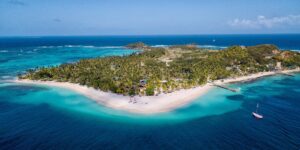17 Interesting Facts About Grenada That You Didn’t Know Before Today!
Picture pristine beaches, lush rainforests, and vibrant culture all wrapped up in one breath-taking destination. Here are 17 interesting facts about Grenada that you didn’t know before today.
From its tantalizing spice markets to its rhythmic carnival celebrations, Grenada offers an unforgettable experience at every turn.
Whether you’re a beach bum seeking sun-soaked bliss or an adventure seeker ready to explore hidden waterfalls, Grenada has something for everyone.
So grab a cocktail, kick back, and let us take you on a journey through the sights, sounds, and flavours of this tropical paradise and learn 17 things about the beautiful island of Grenada.
Ready to dive in? Let’s go!


17 Facts About Grenada
These 17 facts prove that there’s more to know about Grenada that just beautiful white sandy beaches and glorious Caribbean sunshine.
1. Grenada comprises of three islands
2. The island boasts a native cocoa bean, aiding the local chocolate production
3. Grenada is home to several impressive waterfalls
4. The island is also known as ‘The Island of Spice’ due to it’s abundance of spice plantations
5. Grenada’s rich history can be seen today through it’s storied forts
6. There’s a lake in the heart of an extinct volcano that you can visit
7. Grenada is known for it’s rum production which dates back to the 17th Century
8. Grenada plays host to one of the major Leatherback Sea Turtle nesting sites in the Caribbean
9. The annual Grenadian Carnival, known as SpiceMas, takes place from July to August
10. Be sure to exchange a greeting with locals, otherwise it’s seen as rude
11. The Island was destroyed by Hurricane Ivan back in 2004
12. Grenada is home to a mesmerising underwater sculpture park
13. Hog Island, set off the coast of Grenada is a beach lovers paradise that you can visit
14. The National dish of Grenada is called ‘Oildown’
15. There is a monument to the people who jumped to their death’s back in the 1600’s at Sauteurs, a town named after them which means ‘jumpers’ in French.
16. The National flower of Grenada is the Bougainveilla
17. The National Bird of Grenada is the Leptotila Wellsi
1. Grenada is made up of 3 individual islands
Grenada comprises of three islands: Grenada, Carriacou and Petite Martinique. Among them, Grenada is the largest, spanning 12 miles in width and 21 miles in length, totalling 133 square miles. It’s highest peak, Mount Saint Catherine, reaches 2,757 feet.
In contrast and approximately an hour and 45 minutes by boat sits Carriacou – a less mountainous island, with a population of approximately 6,000 and covering an area of 13 square miles, characterized by picturesque sandy beaches.
Petit Martinique, the smallest island out of the three, has a population of just 900 people, with an area covering less than 1 square mile.

2. Embark on a delectable journey through Grenada’s Chocolate paradise
Nestled in the heart of the Caribbean, this lush island boasts a native cocoa bean cherished for its exquisite flavour profile and cultivated in fertile volcanic soil.
From tree to treat, Grenada’s chocolate production is a labour of love. Blending traditional techniques with sustainable practices. Farmers employ eco-friendly methods, preserving biodiversity and supporting local communities. Through fair trade initiatives, Grenadian cocoa finds its way on to global stages, enriching palates while uplifting livelihoods.
When visiting the island, you have the opportunity to visit these lush plantations where each bean tells a story of tradition and innovation. Tri-Island Chocolate Factory offer fascinating excursions for you to visit during your stay on this wonderful island.
With every bite of Grenadian chocolate, you savour not just a treat, but a legacy of passion and stewardship, where flavour meets sustainability in perfect harmony.
3. Grenada is home to a multitude of impressive waterfalls
Tumbling amidst lush rainforest scenery, these natural wonders offer more than just a refreshing dip. Venture off the beaten path to discover Annandale, where the cascading waters plunge into a serene pool, surrounded by verdant foliage and playful wildlife.
Immerse yourself in Concord, where the majestic falls create a dramatic backdrop for swimming and picnicking, beckoning adventurers to linger in its cool embrace.
For a truly enchanting experience, don’t miss Seven Sisters, where a series of cascades cascade down moss-covered rocks, creating a mesmerizing spectacle of nature’s power and tranquillity.
Grenada’s waterfalls are not just sights to behold—they’re invitations to connect with the island’s soul, where every drop tells a story of resilience and beauty.

4. Grenada is also known as The Island of Spice
With fertile soil and a tropical climate, Grenada is the perfect place to fill your spice rack. Offering a sensory feast for visitors. Grenada earns its nickname from its abundance of aromatic spices like nutmeg, cinnamon, and cloves. These treasures have shaped the island’s history and culture, from its vibrant markets to its flavourful cuisine.
Explore spice plantations, indulge in culinary delights, and take home a piece of Grenada’s essence with you on this Grenada Fort and Spice Tour.
5. Grenada’s rich history can be seen through it’s storied Forts
Fort George, Fort Matthew and Fort Frederik are the three main historical sites, where stunning vistas and fascinating exhibits on Grenada’s Colonial past are situated.
Built in 1706 and standing as a guardian of the past, Fort George offers panoramic views of St. George’s harbour, echoing tales of battles and conquests. You can even climb to the top to see the cannons and stunning birds-eye views across the island.
Dive into Fort Matthew’s intriguing history, once a prison and now a captivating tourist attraction showcasing its military heritage. The fort was built from 1784 through 1790 and has one of the most colourful historical pasts. Though accidentally bombed by U.S. forces during the invasion of Grenada in 1983, the Fort and its 18th century bathrooms, army kitchens and blocks of cells remain mostly intact. Feel a sense of wonder and adventure as you walk through the intact tunnel network beneath the fort.
You can stand at one end of this captivating structure and you will see a mesmerizing view of the town of St. George; capturing the Melville Street Cruise Port, St. George’s University, the Carenage, and so much more.

6. Grenada has a lake in the heart of an extinct volcano
Nestled in the heart of Grenada’s lush interior lies the enchanting Grand Etang Lake and National Park. Formed in the crater of an extinct volcano, the lake is a natural wonder surrounded by verdant rainforest teeming with biodiversity.
Visitors can explore a network of hiking trails, spotting exotic flora and fauna along the way. But it’s not just nature that captivates here – legend has it that Grand Etang is home to a mystical mermaid named Grandmere Filomina. Locals believe she protects the lake’s ecosystem and grants wishes to those who treat it with respect.
With its blend of natural beauty and folklore, Grand Etang is a must-visit destination for adventurers seeking both wonder and enchantment in Grenada.

7. Grenada is well known for it’s rum production
Grenada is also known for it’s contribution to rum production which dates back to the 17th Century when European settlers introduced sugarcane cultivation to the island.
Grenadian rum stands out with it’s complex and spicy aromas with notes of nutmeg, cinnamon and cloves, providing a rich and authentic flavour with each taste.
There are four rum distilleries on the island including the infamous River Antione which has been producing rum since 1785 but it still doesn’t make enough to meet local demand. So if you want to try their rum, you’ll need to be quick!
River Antione is a working distillery that employs approximately 80 people, so if you want a real glimpse of life inside a traditional Caribbean rum distillery then this is the trip to take! Be warned, however – at the end of the tour visitors are treated to a rum tasting with four different drinks to try including one so powerful that you can’t take it on a plane home with you! The 150 over-proof River Antione Royal Granadian Rum is not for the faint-hearted!
8. Grenada is a nesting ground for Leatherback Sea Turtles
Grenada Island plays host to one of the major Leatherback Sea Turtle nesting sites in the Caribbean, with hundreds of nests laid each year.
Approximately 700-1000 nests are laid at Levera Beach, Grenada’s main nesting site, where the majority of research into these fabulous creatures takes place.
Turtle nesting season runs from April to June, so if you’d like to experience the beauty of nature a it’s peak then be sure to visit during these months. Remember though, they are creatures in the wild so sightings aren’t guaranteed. And even if they are, it goes without saying – make sure you are respectful of their environment.

9. Grenada has it’s own annual Carnival named ‘SpiceMas’
Experience the pulsating energy of Grenada’s SpiceMas carnival, a vibrant celebration of the island’s rich spice heritage. From July to August, Grenada comes alive with colourful Jab Jab dances, elaborate costumes, and infectious rhythms.
Join the festivities as the streets transform into a kaleidoscope of activity, filled with parades and pure Caribbean vibes. SpiceMas isn’t just a festival; it’s a testament to community, tradition, and the island’s indomitable spirit.
So immerse yourself in the magic of SpiceMas and embrace the joy of Grenada’s most anticipated event.
10. Exchange a greeting with locals otherwise you’re seen as rude!
Grenadians are without a doubt some of the friendliest people in the Caribbean, and like many Caribbean islands, greetings matter. So take note – When you encounter locals, you’re expected to exchange a greeting, and to respons to other people who might exchange a kind salutation.
Not responding, or not greeting people you encounter is considered rude in Grenada! So say hello, give a smile and become a friend of the island and the locals.
11. Hurricane Ivan destroyed the island back in 2004
Hurricane Ivan’s devastating impact on Grenada in 2004 left a profound mark on the island’s infrastructure, culture, and trade. The Category 4 storm inflicted widespread destruction, causing extensive damage to homes, roads, and public utilities.
Grenada’s lush landscape was stripped bare, affecting its vital agricultural sector and spice production, which the island is renowned for. Approximately 80% of nutmeg trees were destroyed, the island’s principal export.
Additionally, the storm’s ferocity shattered cultural landmarks and disrupted traditional practices, deeply affecting the island’s social fabric.

12. Grenada is home to the world’s first Underwater Sculpture Park
The Molinere Underwater Sculpture Park is located off the coast of Grenada. A collaboration with nature, this subaquatic wonderland boasts over 65 sculptures submerged beneath the crystal-clear Caribbean waters.
Created by renowned artist Jason deCaires Taylor, each sculpture serves as a unique habitat for marine life, while also offering a thought-provoking commentary on environmental conservation and the relationship between humanity and the ocean.
This extraordinary fusion of art and nature, where vibrant coral reefs and aquatic creatures mingle with human forms frozen in time. It’s a truly immersive experience that will leave you breathless!

13. Grenada has it’s own private paradise Island
Hog Island has a split personality as a travel destination. During the week, it transforms into a tranquil haven, offering a private island experience to visitors from Monday to Saturday.
Come Sunday, the lively atmosphere springs to life with Roger’s Bare Foot Beach Bar, boasting live music and beachside BBQ’s. Whether you crave a serene beach day or seek the vibrant ambiance of Grenada’s renowned beach parties, Hog Island caters to all preferences.
Adding to its allure, Hog Island sits close to vibrant coral reefs and marine life, making it a paradise for scuba divers and snorkelers. Encounter an array of sea creatures, from colourful fish and reef sharks to fascinating sea urchins and conchs.
Whether you’re a laid-back hammock lounger or an intrepid explorer, Hog Island offers something for everyone to enjoy.

14. The National Dish of Grenada is called ‘Oildown’
Olidown is a Grenadian dish consisting of salted meats, fresh Caribbean vegetables and dumplings as well as breadfruit and coconut milk. The dish can also be served vegetarian.
The name of the dish refers to the fact that the oil from the coconut milk used in cooking is either absorbed by the ingredients or settles to the bottom of the cooking pot.
15. Grenada Wasn’t Always Sunshine & Smiles
Back in the 1600s, the French ‘bought’ the island of Grenada from the indigenous Caribs. But not everyone on the island was happy about the transaction and the local population revolted. Eventually, the French cornered the rebels on top of a cliff in Sauteurs Bay.
Instead of surrendering, the remaining Caribs jumped to their deaths off the cliff. This included men, women and children. There is a monument to the people on the edge of St Patrick’s Church cemetery in Sauteurs, a town named after them (‘jumpers’ in French).
16. The National flower of Grenada is the Bougainvillea
Grenada’s national flower is the beautiful, bright and colourful Bougainvillea. Bougainvilleas are widely-grown and popular tropical vines whose main attractions are very colourful bracts or leaves.
These bracts are commonly mistaken by many as the flowers of the plant because of their prominence, when in fact the flowers are actually the small, white trumpet-like inconspicuous flowers surrounded by the bracts.
The plant originates from South America, in the regions around Brazil, Peru and Argentina. Today they grown in tropical areas of the Caribbean, as well as the Mediterranean, Mexico, Australia, Hawaii and many others. The French botanist, Philbert Commerson discovered the plant and names it after his friend, Captain Louis A. Bougainvillea, an explorer, mathematician and lawyer from Canada.
17. The National Bird of Grenada is the Leptotila Wellsi
More commonly known as the Grenada Dove, this critically endangered bird is somewhat large and chunky, and can be found amongst dry woodlands where it is typically found foraging on the ground. Its plain plumage, the lack of white on the wings, and the very limited white on its tail, distinguish it from other doves on Grenada.
According to BirdLife International, the population of the Grenada Dove is thought to be decreasing and it is estimated that there are approximately only 160 individuals left of this species in the world!

Find out more about the Top Things To Do in Grenada
So there you have it – 17 interesting facts that you probably didn’t know about Grenada before today!
Hopefully all of that knowledge has tempted you into planning your next getaway. Discover our amazing collection of Grenada Resorts and book your next escape today!
Or if you’re looking for what else there is to do on this beautiful Caribbean island, click the button below to find out more of the top things to do in Grenada.







